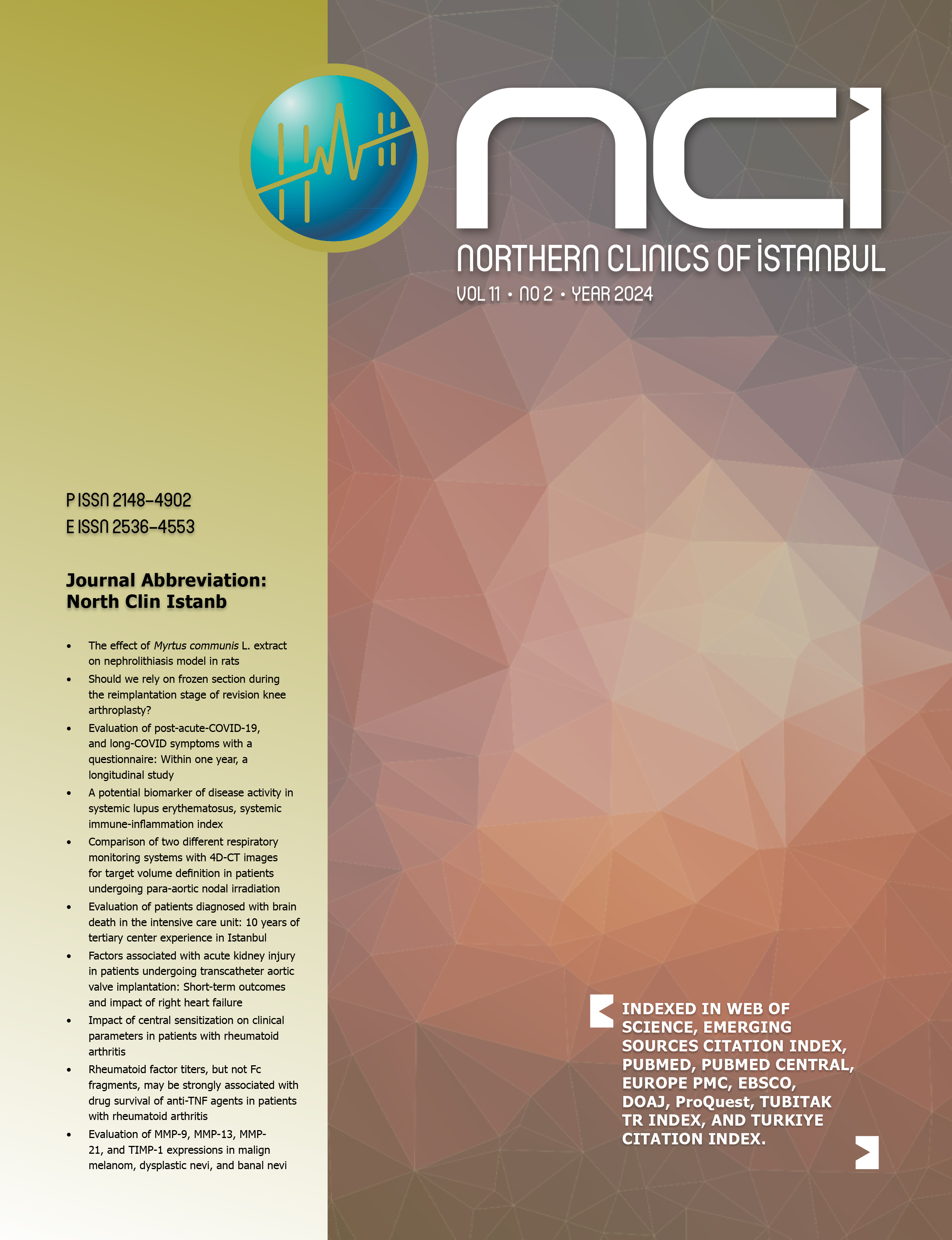Comparison of intraoperative ultrasonography guidance with an open surgical method for venous port catheter placement in chemotherapy
Ozan Onur Balkanay1, Süleyman Demiryas21Department of Cardiovascular Surgery, Manisa Government Hospital, Manisa;Department of Cardiovascular Surgery, Cerrahpasa Medical Faculty, Istanbul University-Cerrahpasa, Istanbul, Turkey2Department of General Surgery, Cerrahpasa Medical Faculty, Istanbul University-Cerrahpasa, Istanbul, Turkey
INTRODUCTION: One of the leading venous access methods in chemotherapy is the use of a venous port catheter (VPC). An open surgical or ultrasound-guided technique can be performed. In our study, the VPC placement via both of these techniques was compared.
METHODS: A total of 180 consecutive patients who underwent the VPC placement procedure either via the open or ultrasound-guided methods in two centers between January 2014 and January 2016 were included in the study. Patients data were reviewed retrospectively. Groups were compared in terms of intervention-related complication rates, a total procedure time, and the requirement of control imaging with ionizing radiation.
RESULTS: The mean total procedure time was significantly shorter (19.5±4.6 min, 46.7±19.6 min, p<0.001) in the ultrasound-guided group than the open method. The rate of catheter malposition was significantly less in the ultrasound-guided group than in the open group (p<0.001). The need for per-operative imaging with ionizing radiation and the need of reversion in the preferred technique were not observed in the ultrasound-guided group, whereas in the open group, they were observed in 90 (100%) and 6 (6.7%) patients, respectively (p<0.001, p=0.01).
DISCUSSION AND CONCLUSION: Intraoperative ultrasound guidance for the VPC placement shortens the processing time and eliminates the need for routine imaging methods that require the use of ionizing radiation. In accordance with the current guidelines recommendations, intraoperative ultrasonography should be preferred as much as possible during the VPC placement. However, the need for the surgical teams in centers to maintain the necessary educational processes for both techniques should not be overlooked.
Keywords: interventional, ultrasound, operative procedures; venous catheterization.
Manuscript Language: English





















